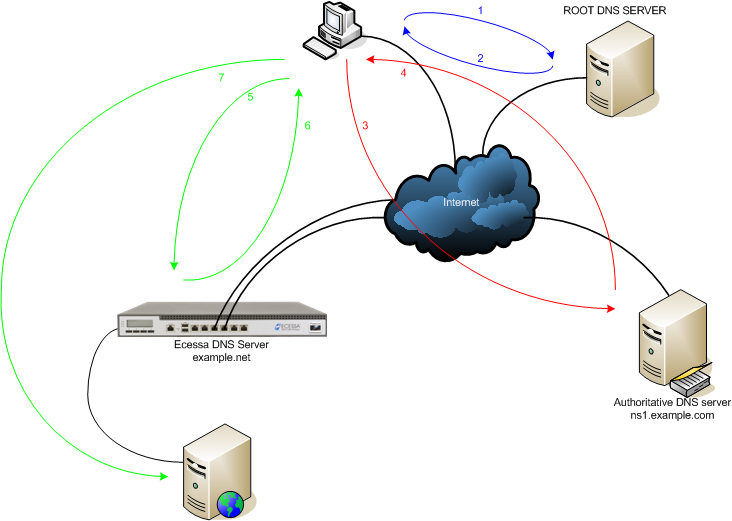
A web application can be broken down into server-side and client-side operations. Client-side operation run on the client and server-side operate on the server. The server's handling of inputs and outgoings is what makes the difference. The server side of a website application can process large numbers of data, while still maintaining a high degree security.
Client-side
Client-side render is one of most reliable ways of presenting dynamic content. It allows you pre-populate web page with custom data and reduces the server load. It can slow down the page loading time by adding milliseconds and even seconds. Server-side rendering, however, is dependent on the server to generate pages.
In the past almost all business logic was executed on the server. This meant that dynamic pages could be created, databases could be accessed, push notifications sent, and identity authentication was possible. This introduced high latency to the application. Applications run more code on clients today to reduce latency.

Frontend
Frontend server-side web development deals with user interactions. Client means the device that interacts with the website, such as a browser or a mobile phone. The "client-side" refers to everything displayed and any processes that are done on the client. This is a world that is very different to the traditional "server-side" of web development.
Frontend developers are those who create the design and layout of a web app. These developers translate backend knowledge into a more accessible format. To create a website's look and feel, they use a markup language like HTML or CSS.
Streaming
Streaming server side benefits developers as well as users of an app. This shifts the processing burden from clients to the cloud, which makes the application run faster. This helps create a better customer experience. It allows you to make changes to your application without updating the client. This is good for both users and developers, since many users don't like the idea of having to update their app.
Client-side streaming has a problem in that users can install ads-blockers. These can cause problems with the data stream and prevent users from obtaining important data like coupons or special offers. Websites that have to provide such data will find client-side streaming expensive. Instead, streaming server side is the best option for these websites.

Storage
Server-side storage architectures have emerged as a new category of data storage. This allows for storage media to be placed in servers without the need for dedicated storage arrays. You can choose from simple SAN substitute appliances or more sophisticated, software-defined storage devices. However, there are certain disadvantages of server-side storage architectures.
Storage server architectures can address a range of concerns including cost, scalability and security as well as ease of administration. Modern computing environments require a greater level of sophistication in design. As new hardware replaces older technology, server-side storage architectures must maintain compatibility and accessibility. To optimize performance, some servers include advanced load balancing systems as well as queuing theory.
FAQ
Do I need a portfolio to get hired as a web designer?
Yes. If you want to land a job as web designer or developer, your portfolio is essential. Portfolios must showcase your skills and experiences.
Portfolios usually include samples of past projects. You can include anything that demonstrates your skills. You should have everything in your portfolio, including mockups.
What is a website static?
A static website is a site where all content are stored on a server, and visitors can access it via web browsers.
The term "static" is used to refer to the absence of dynamic features like changing images, video, animations, etc.
This type of website was originally created for use in corporate intranets. It has since been adopted both by individuals and small companies who are looking for simple websites that do not require any programming.
Static websites are becoming more popular due to their ease of maintenance. They are simpler to update and maintain than fully-featured websites that have many components (like blogs).
They load also faster than their dynamic counterparts. They are ideal for mobile users and those with slow Internet connections.
Static websites are also more secure than dynamic ones. There's nothing to hack into a static website. Hackers only have access to the data that resides inside a database.
There are two main methods to create static websites:
-
A Content Management System (CMS),
-
Create a static HTML website
The best one for you will depend on your specific needs. A CMS is my recommendation if your first website was created.
Why? Because it gives you complete control over your website. A CMS eliminates the need for a professional to set up your site. All you need to do is upload files to the web server.
Still, you can learn to code and create static websites. You'll have to invest time learning how programming works.
How much does a website cost?
It depends on what your website is used for. For instance, if you just want to post information about yourself or your business, you might be able to get away with free services such as Google Sites.
However, if visitors are serious about coming to your site, they will be willing to pay more.
A Content Management System (like WordPress) is the best solution. These programs can be used to build a website quickly and easily without having to know any programming. And because third-party companies host these sites, you won't need to worry about getting hacked.
Squarespace offers a great way to build your website. Squarespace offers a variety plans that range from $5 per person to $100 per person, depending on what information you want to include.
Statistics
- Studies show that 77% of satisfied customers will recommend your business or service to a friend after having a positive experience. (wix.com)
- Is your web design optimized for mobile? Over 50% of internet users browse websites using a mobile device. (wix.com)
- The average website user will read about 20% of the text on any given page, so it's crucial to entice them with an appropriate vibe. (websitebuilderexpert.com)
- When choosing your website color scheme, a general rule is to limit yourself to three shades: one primary color (60% of the mix), one secondary color (30%), and one accent color (10%). (wix.com)
- It's estimated that chatbots could reduce this by 30%. Gone are the days when chatbots were mere gimmicks – now, they're becoming ever more essential to customer-facing services. (websitebuilderexpert.com)
External Links
How To
Drupal 7: How to Use It for Web Design
Drupal is the most used Content Management System (CMS) of today. It was created by Dries Buytaert, a Belgian developer. Named after the names of its two developers, Dirk Buijtewaard (from Belgium) and Pierre d'Herbemont (from France). In 2005, Drupal became open source, and since then, there are many versions of this CMS. Today, Drupal is used by many websites and companies around the world.
Drupal is a popular choice for website owners because of several reasons. It is easy to download and install. Second, it is easy to customize and extend. It is well documented. It also provides excellent support via forums and IRC channels. It can also be extended with modules. Sixth, it supports multiple languages. Seventh, it is easily customizable. Eighth, it can be scaled. Ninth, it's secure. Tenth, it's reliable. Finally, it is supported by the community. Drupal is an excellent choice for your next development project.
You might be wondering what makes Drupal unique from other CMSs. It is very simple. Drupal is an open-source content management system. This means that it is freely downloadable and completely free to use. Drupal gives you full control over your website. You can add or remove pages, change colors, fonts, images, videos, etc.
If you want to create a website but lack technical skills, then you can choose Drupal. You don't have to be a programmer to build your website, unlike other CMS. You only need to know how Drupal works. This will allow you to customize your website as per your requirements.
Drupal's many pre-built themes, and plugins are another benefit. These plugins will allow you to increase the functionality of your website. For example, you can use the Contact Form module to collect contact information from visitors. Google Maps can be used to display maps on your site. There are thousands of ready-made templates that come with Drupal. These templates will give your website a professional appearance.
Moreover, Drupal is highly flexible. Drupal supports many different modules, so you can easily add or remove them from your website without worrying about compatibility. If you need to integrate social media in your website, it can be done quickly. You can also set up RSS feeds, e-mail subscriptions, and more.
Drupal's flexibility is also a plus. Drupal allows you to add custom fields and forms, manage your users, and many other features. Drupal can be used to create complex layouts.
Drupal is stable and reliable. Drupal is both stable and scalable. It has excellent security features. Drupal is an excellent web development platform.